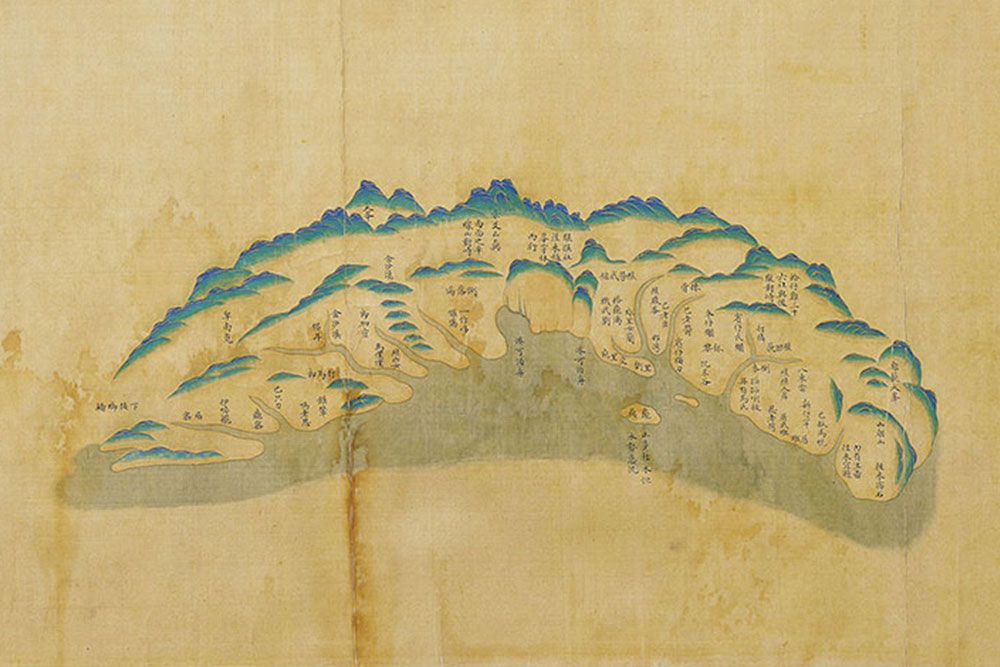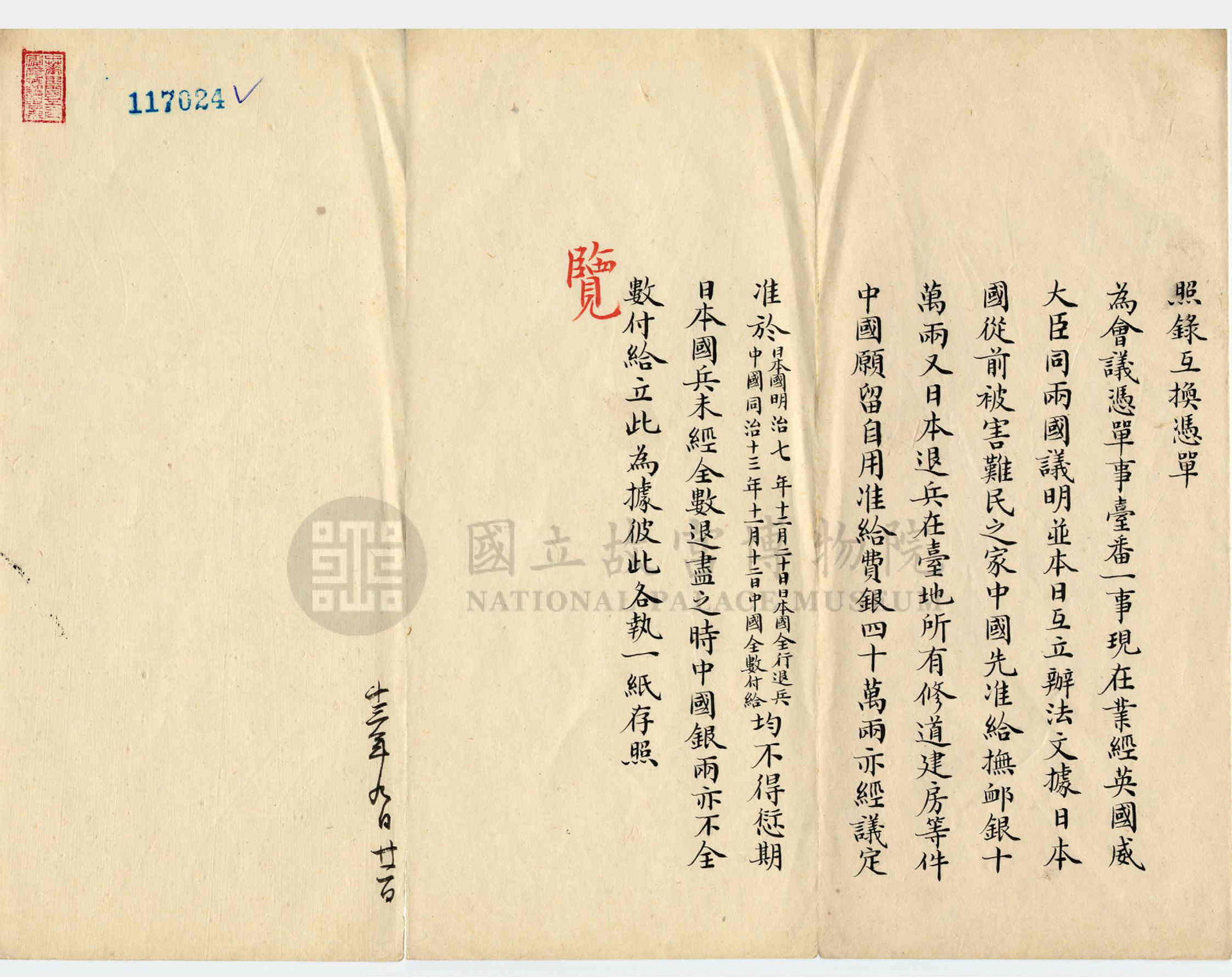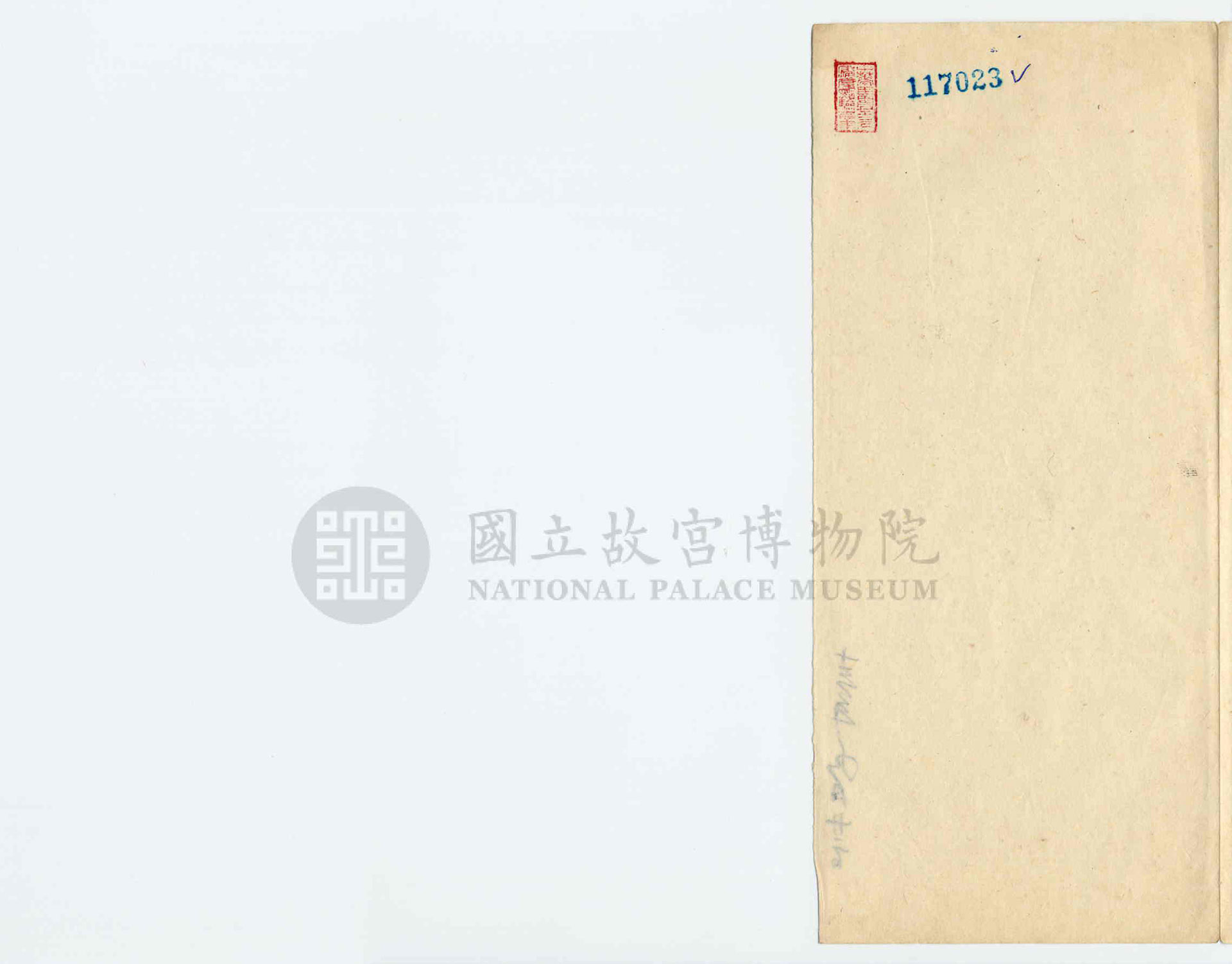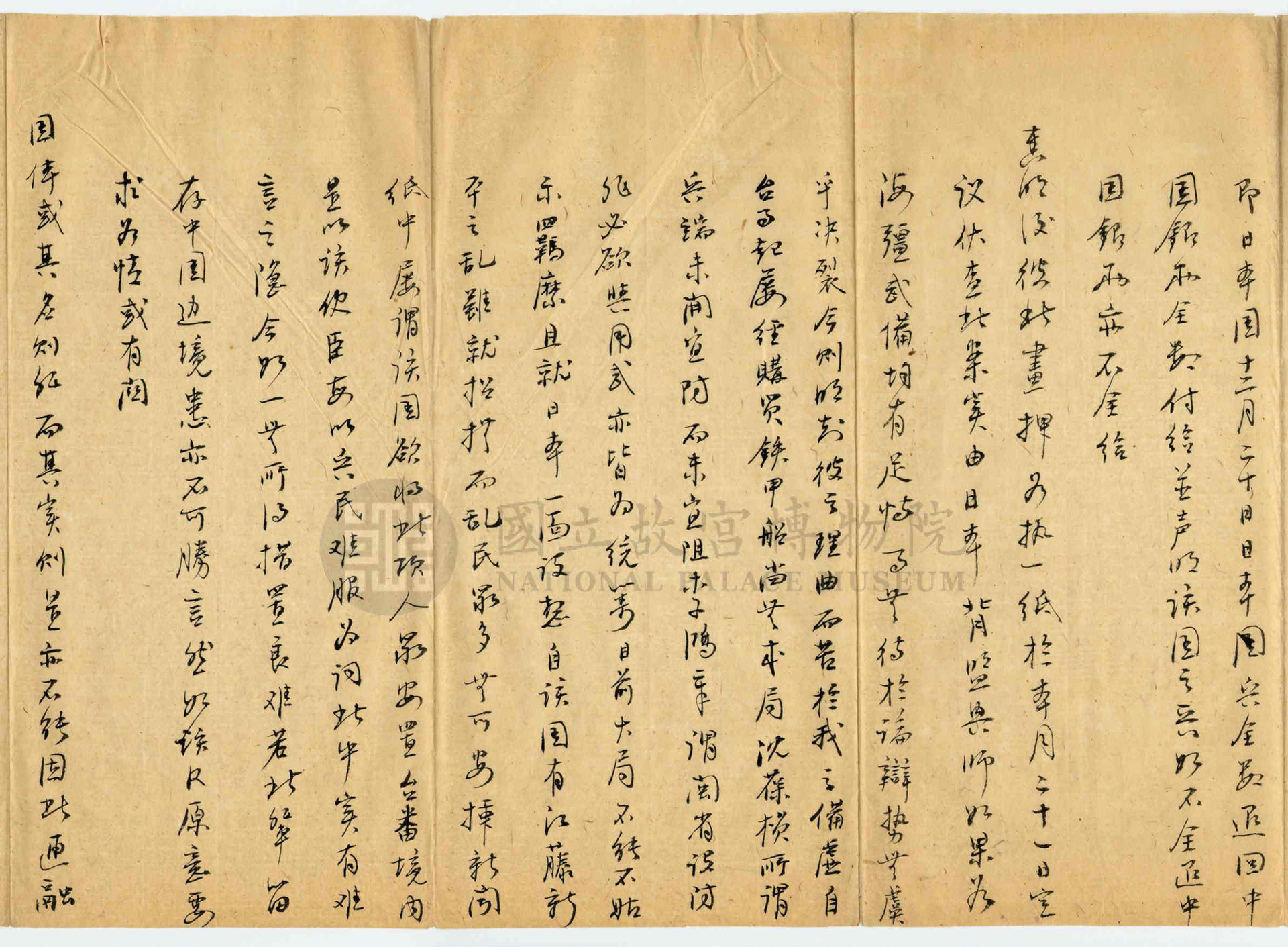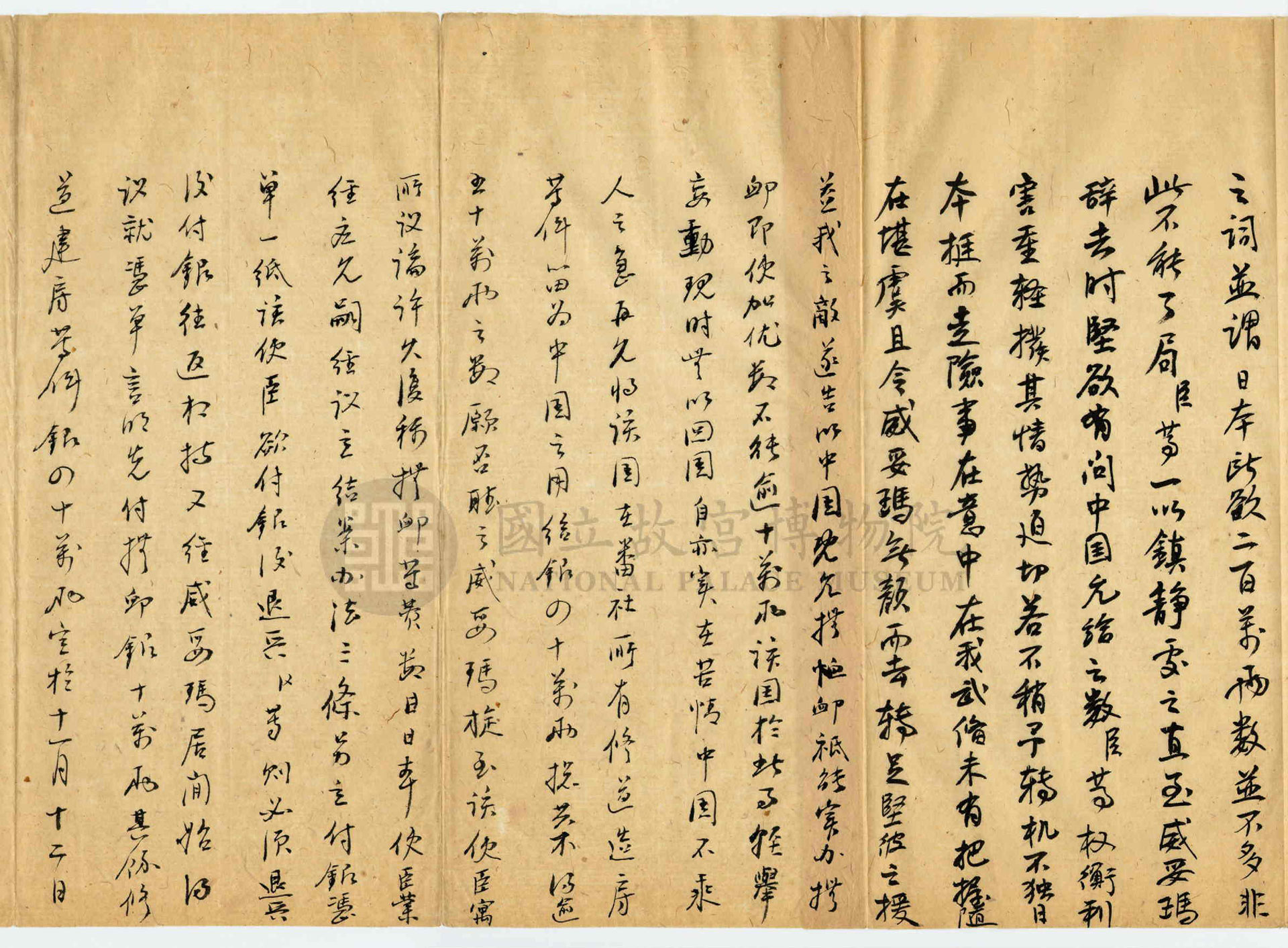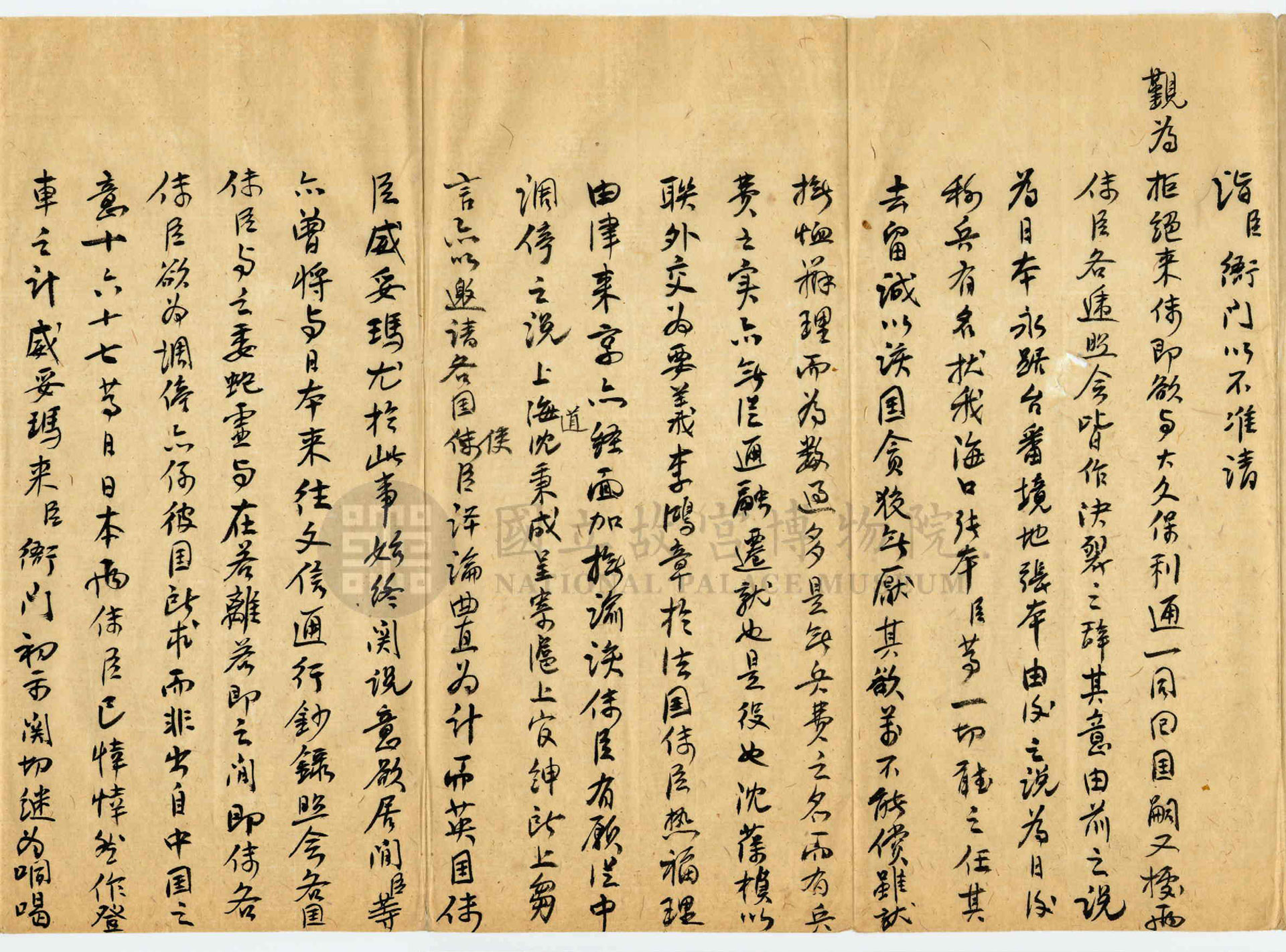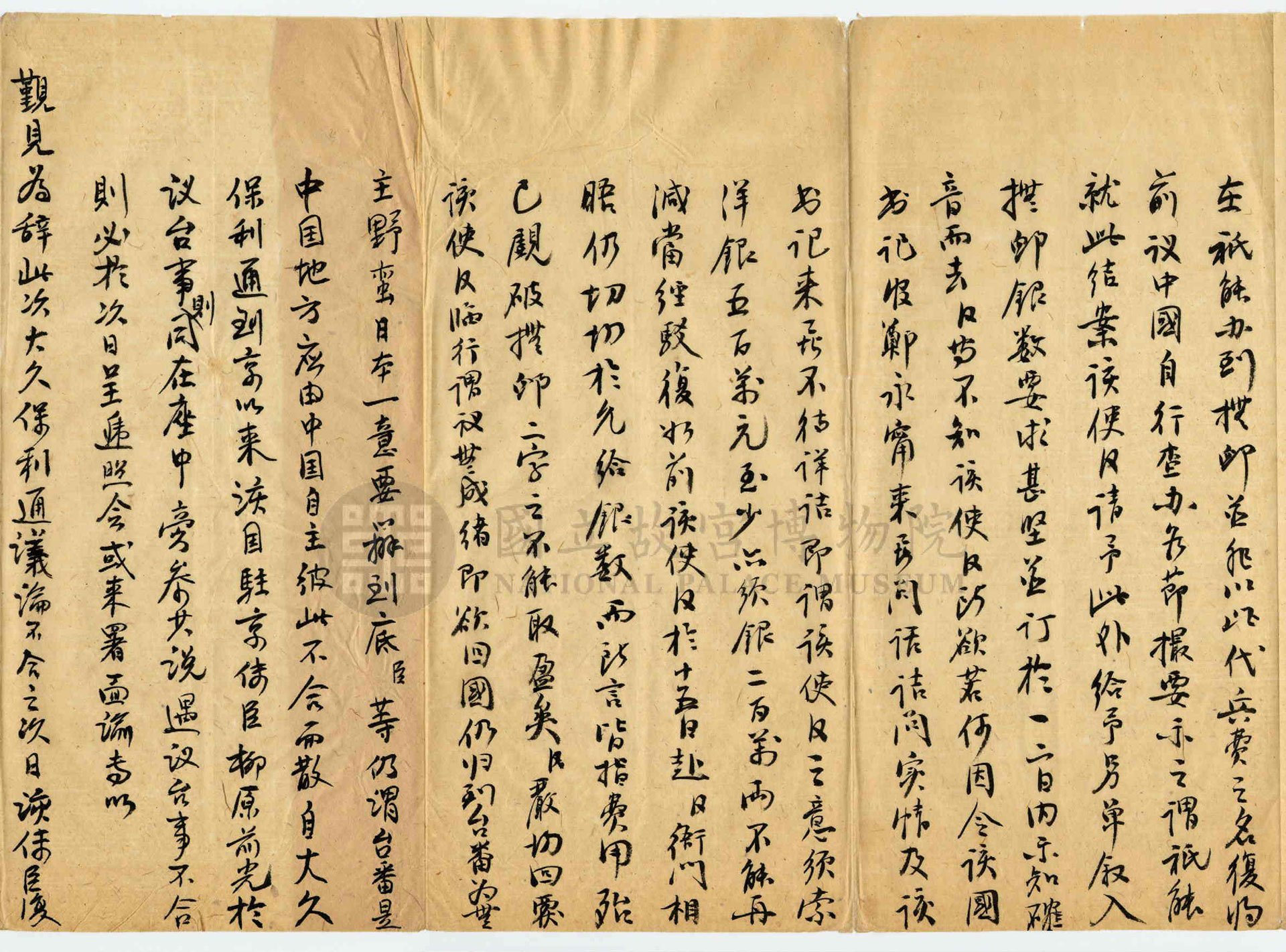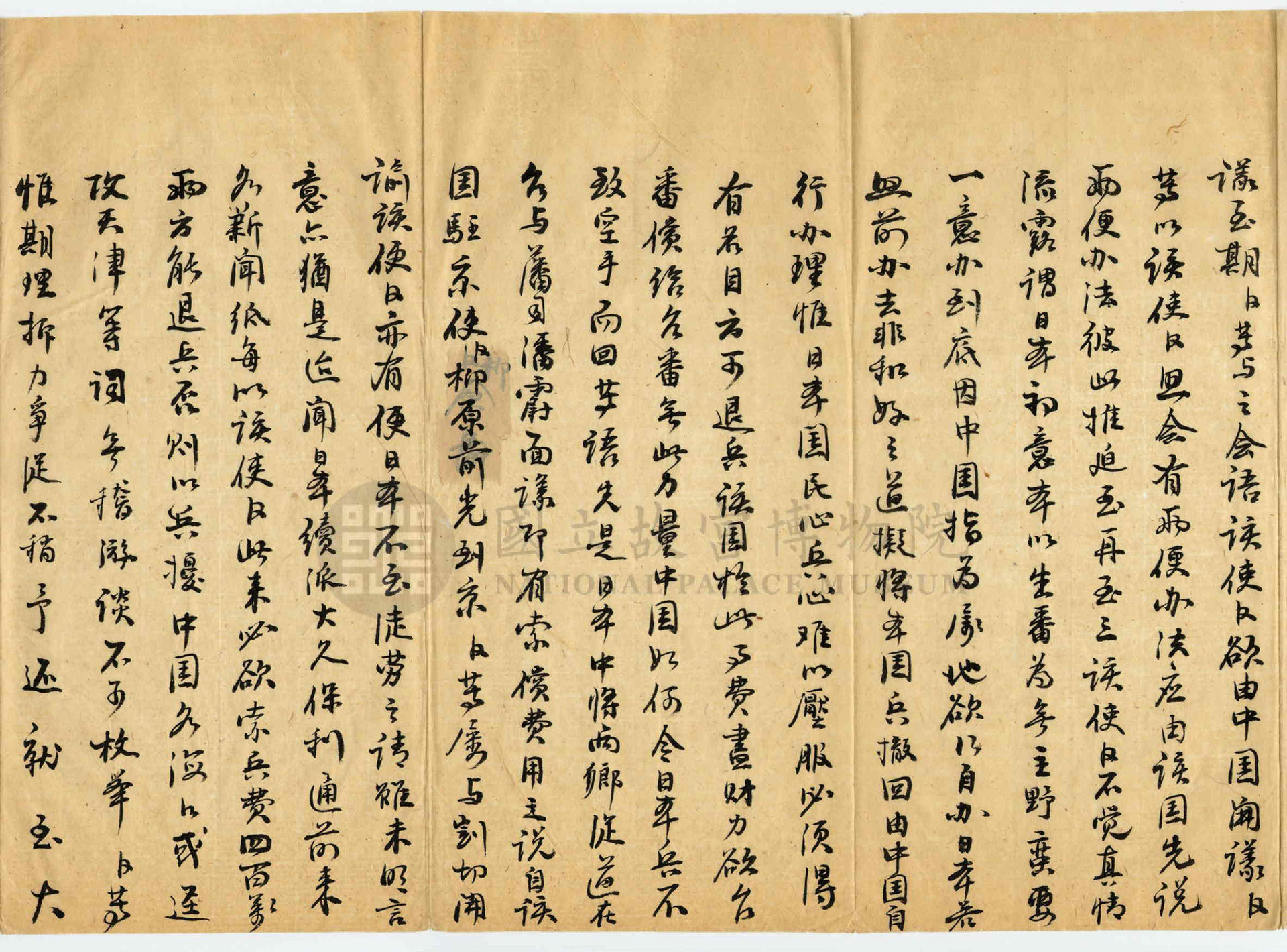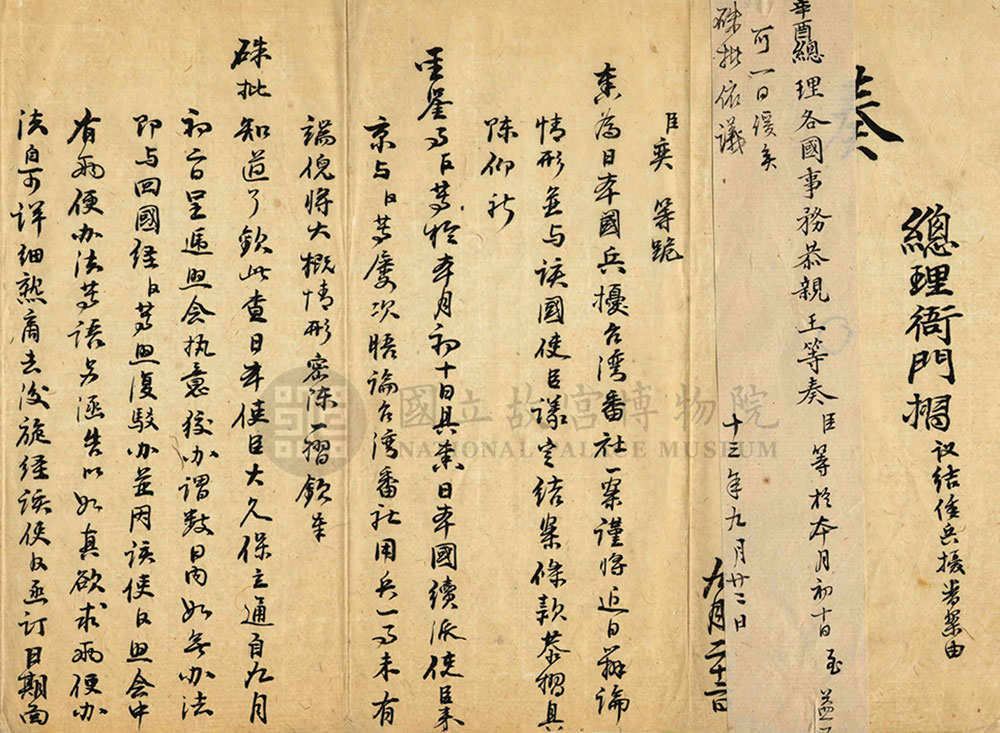A New Policy of "Opening Up the Mountains"
After the Mudan Incident, the Qing Empire followed the advice of the official Shen Baozhen (1820-1879) to deal with its "aftermath" by repealing the ban on entry into the mountains beyond the border and instead adopt a policy of "opening up the mountains" by establishing routes to the eastern part of the island.
After an ambush occurred along the southern route at the Lion Head aboriginal village, the policy of amnesty and pacification turned into one backed with force. Soldiers were divided to forge three routes, and in the twenty-year period between 1875 and 1895, a series of violent confrontations and conflicts would take place with the Taiwanese indigenous peoples.
- Complete Map of the Military Posts of the Seven Coastal Provinces
- Drawn by Chen Mei
- Daoguang reign (1821-1850), Qing Dynasty
Before the pioneering and barbarian pacification action began, the Qing dynasty had a basic understanding of Taiwan's mountains, as shown in the "Illustration of the River Mouth of Each Province." From right to left, Penghu Island, Taiwan's front mountain drawing, and Taiwan's rear mountain drawing.
- Copy of a palace memorial on reporting the Japanese soldiers' invasion of the aboriginal tribes in Taiwan has been settled with the Japanese ambassador
The Qing dynasty and Japan signed a reparation and military retreat agreement called the Beijing Special Declaration as the result of the Mudan Incident.
As a result of the Mudan Incident and the Japanese military mobilization, the proposal to lift the ban on entering the mountains emerged.



